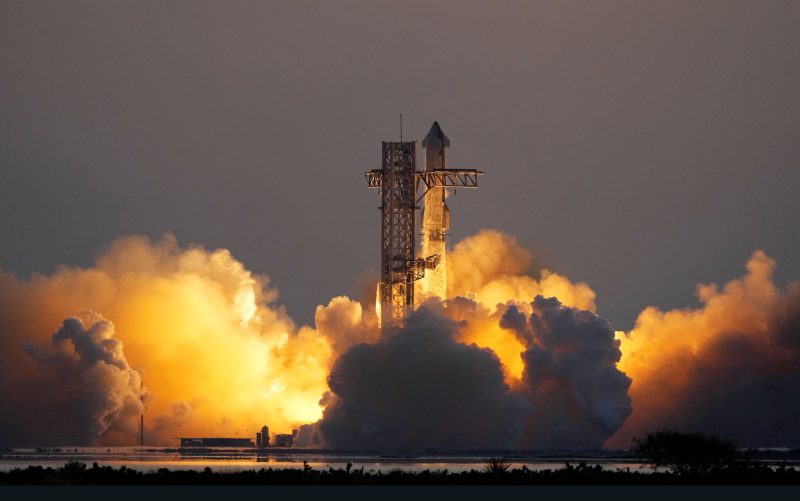SpaceX has announced the rescheduled attempt for the 10th flight test of its Starship program, set for Tuesday evening, March 5, 2024. The launch window opens at 18:30 Central Time, following multiple delays that have plagued previous attempts. The latest cancellation was due to unfavorable weather conditions.
During this flight test, the Super Heavy Booster will conduct a series of flight experiments as it heads towards an offshore landing point in the Gulf of Mexico. Unlike earlier missions, this booster will not return to the launch site for recovery. Instead, the primary focus of the mission will be on evaluating the booster’s landing burn and engine configurations.
Testing New Maneuvers and Configurations
According to SpaceX, the flight will include several “extreme maneuvers” as the booster descends. Louis Balderas from the LabPadre Space Channel explained that these maneuvers will involve high angles of attack to assess how the booster interacts with the atmosphere during descent. The team aims to test the performance of its grid fins and determine the feasibility of landing with fewer engines. This approach will help gauge how well the booster can perform with minimal thrust during the landing burn.
While the external design of the Starship remains largely unchanged, significant modifications have been made internally. These adjustments include new pressurization lines and other tests to ensure the vehicle can withstand the intense heat of re-entry. Previous tests revealed issues such as fuel leakage, prompting further internal enhancements.
Future Implications for Space Exploration
The success of this flight test is crucial for SpaceX as it continues to develop its next-generation spacecraft for missions to the Moon and Mars. Each test flight provides valuable data that informs future designs and operational strategies. By pushing the boundaries of rocket technology, SpaceX aims to revolutionize space travel and reduce costs for future missions.
As anticipation builds for the upcoming launch, the commitment of SpaceX to innovate and test the limits of its technology remains evident. The company’s ongoing efforts underscore the dynamic landscape of space exploration and the potential for significant advancements in the field.
